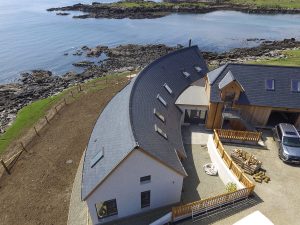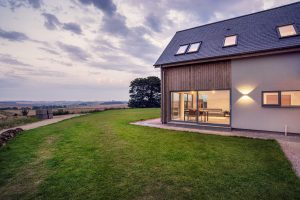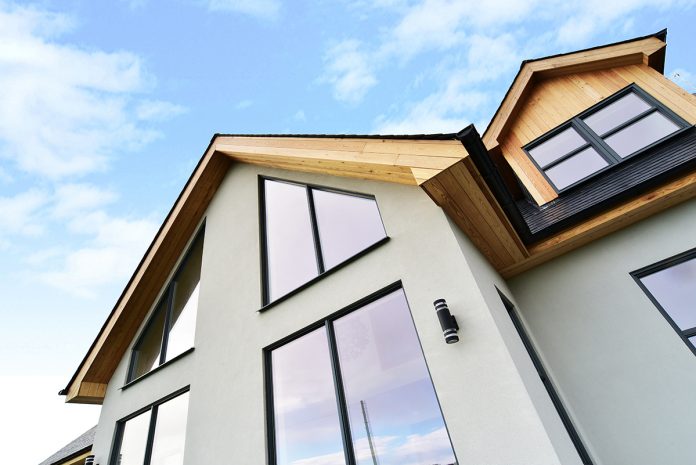Timber’s green credentials mean the UK has to get fully behind its wider adoption for sustainable construction, says Malcolm Thomson of Scotframe
The UK construction sector has made big improvements in the way it builds homes and Modern Methods of Construction (MMC) are definitely here to stay. But we could be doing better. The city of Tokyo has the capacity to build more houses per year than the entire UK.
 But timber construction is sexy again, because of the carbon-capture qualities of wood.
But timber construction is sexy again, because of the carbon-capture qualities of wood.
The UK government has recognised that displacing high-carbon materials such as cement and steel is one of the most effective ways to use limited biomass resources to mitigate climate change.
The year 2050 is the target date set by the government to reduce greenhouse gas emissions to net-zero. That’s a big ask because 40% of the UK’s carbon footprint comes from the construction industry.
There are many ways to reduce greenhouse gas emissions but timber continues to be a top choice as a green building material because of its ability to lock up carbon.
Sourcing environmentally-friendly products
Scotframe’s sustainability is at the heart of our business. We recognise how important it is for our customers to be reassured that we source products that cause no harm to the environment.
We are certified members of the Forest Stewardship Council and the Programme for the Endorsement of Forest Certification – both of which protect and promote sustainable forest management.
 But we also demand the same commitment from suppliers. We work across the industry to ensure the credentials of all the timber we use and our quality assurance scheme is accredited to the highest level – ISO 9001 Standard.
But we also demand the same commitment from suppliers. We work across the industry to ensure the credentials of all the timber we use and our quality assurance scheme is accredited to the highest level – ISO 9001 Standard.
Scotframe’s focus on offsite timber construction also results in less waste going to landfill due to our efficient manufacturing process that spans design, material procurement, manufacturing and onsite installation. Waste levels are typically under 2% of the material used.
But it is arguably in the field of energy efficiency that timber frame construction really shines. And that means making sustainable choices at the design stage.
Championing a fabric first approach
Scotframe champions a fabric first approach, which can lead to significant energy cost savings over a home’s lifetime thanks to a highly efficient panelised construction for the walls, floor and roof of a building. This method of building prioritises insulation and airtightness over more costly renewable systems such as solar panels, or energy-saving technology such as smart meters.
A fabric first approach is more sustainable than bolt-on renewable energy systems, as it doesn’t require the occupant to master complicated new technology or adjust their energy consumption habits – the building does the work. Also, because a building’s fabric is not readily accessible to occupants, it will continue to perform as intended for decades.
For me, that’s where the biggest wins are in terms of creating a truly sustainable construction sector and one where we safeguard and protect our planet for future generations.
Malcolm Thomson
Sector Director – Commercial
Please note: this is a commercial profile.

















